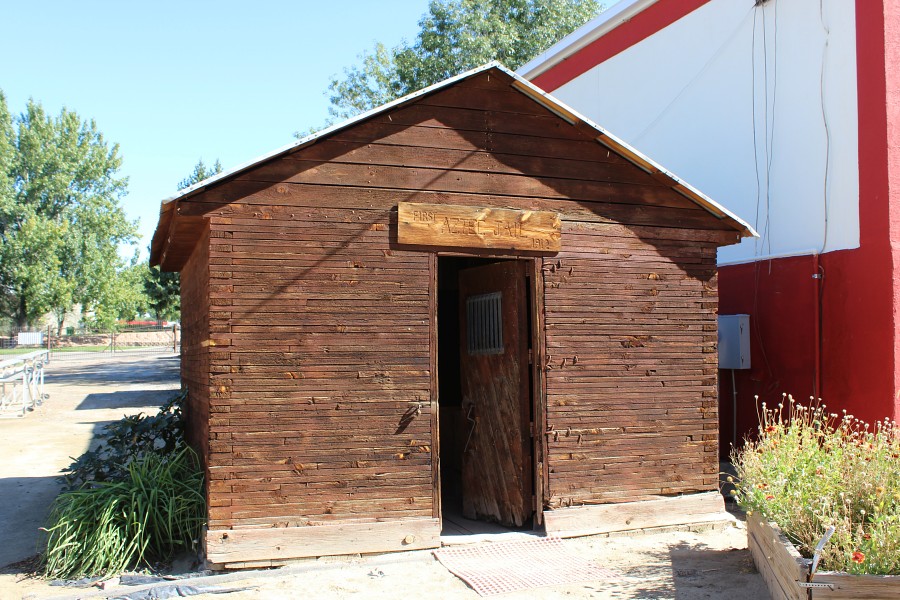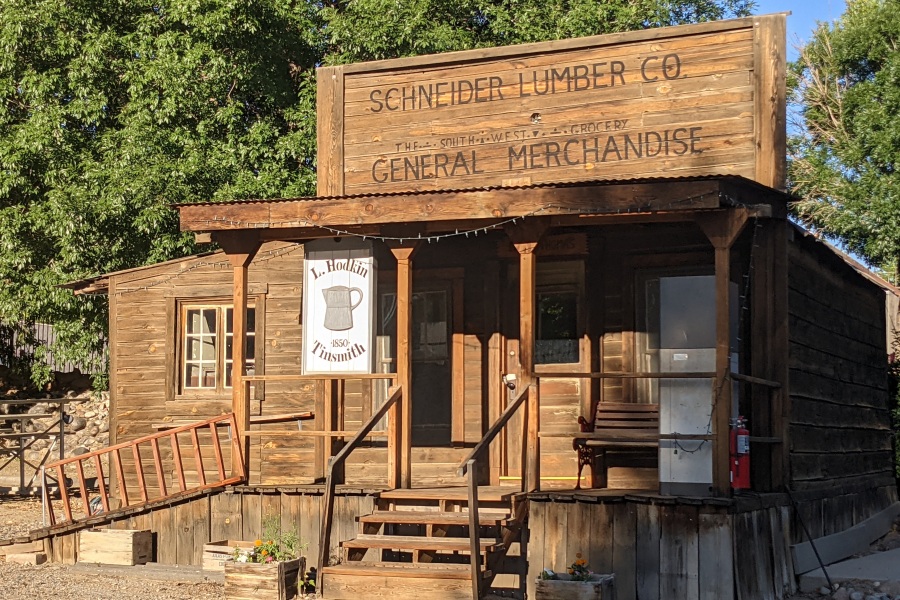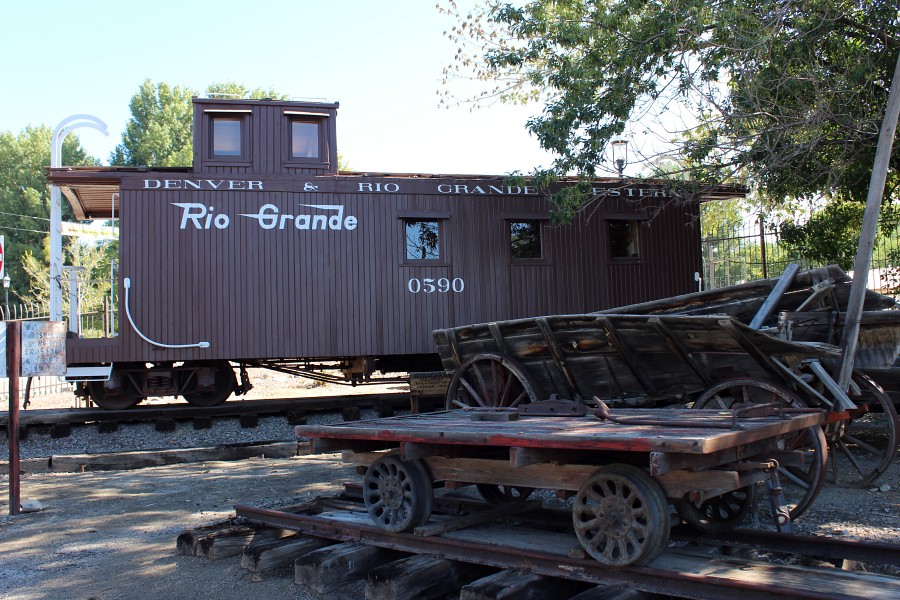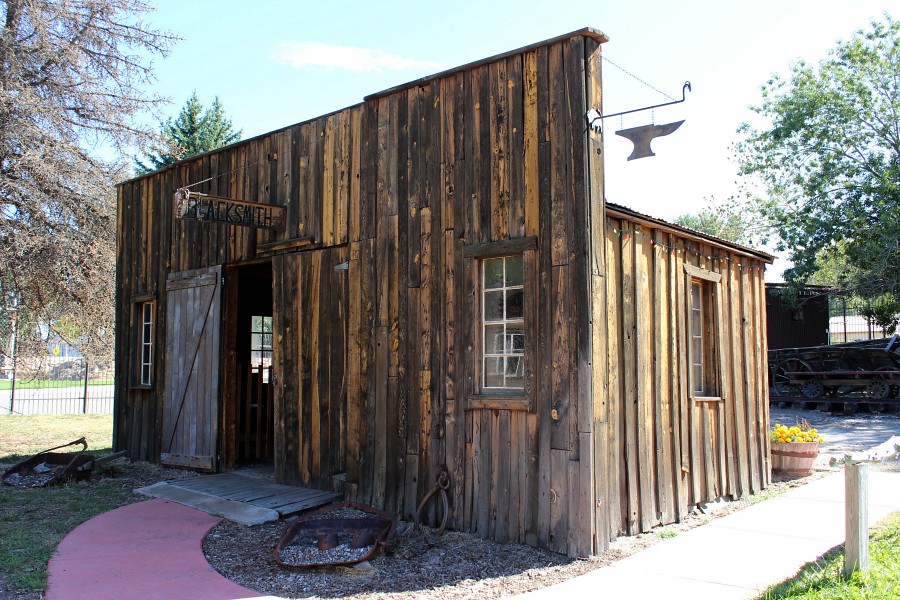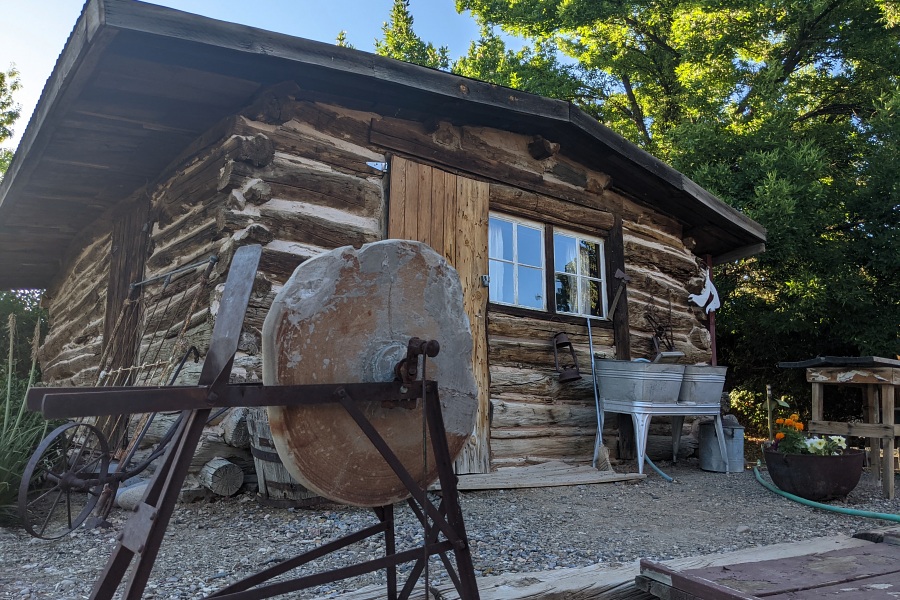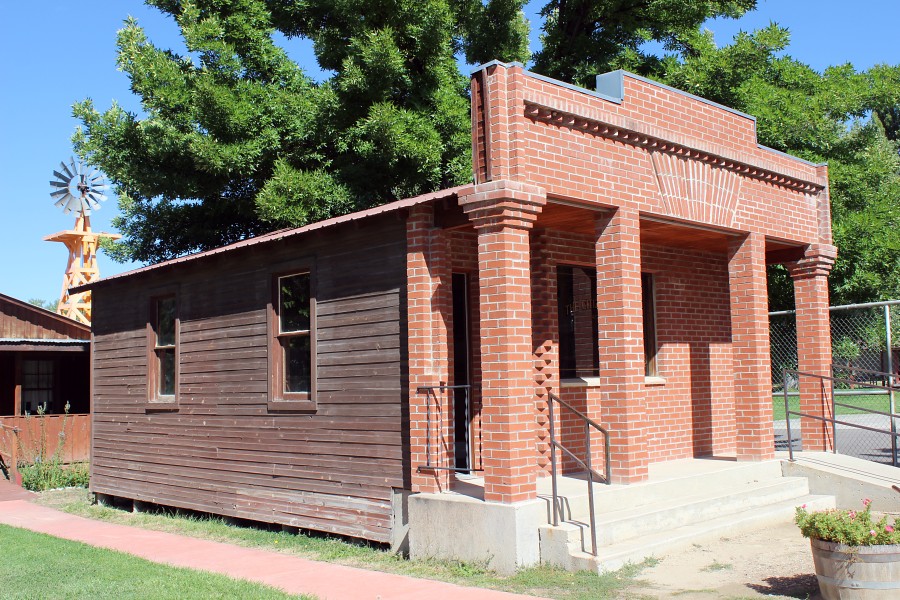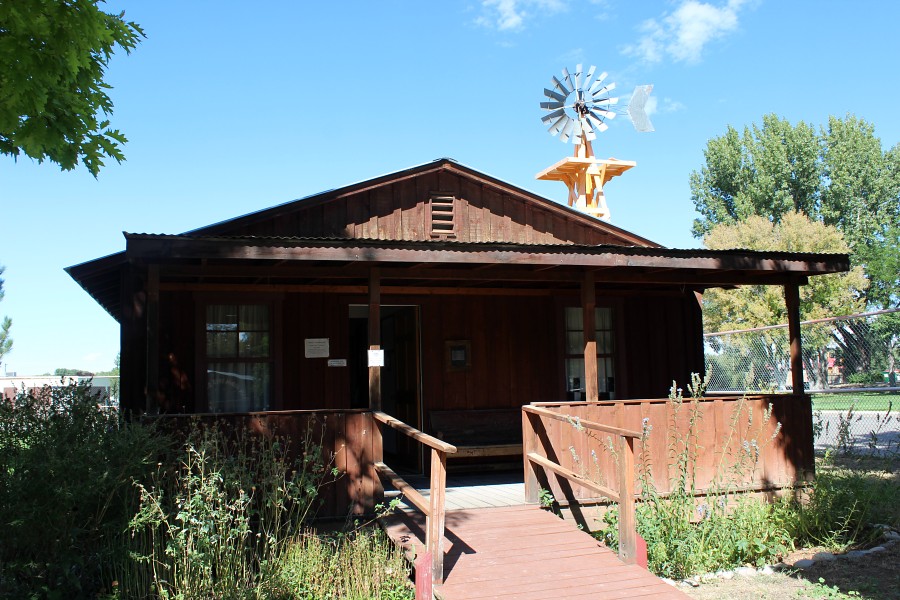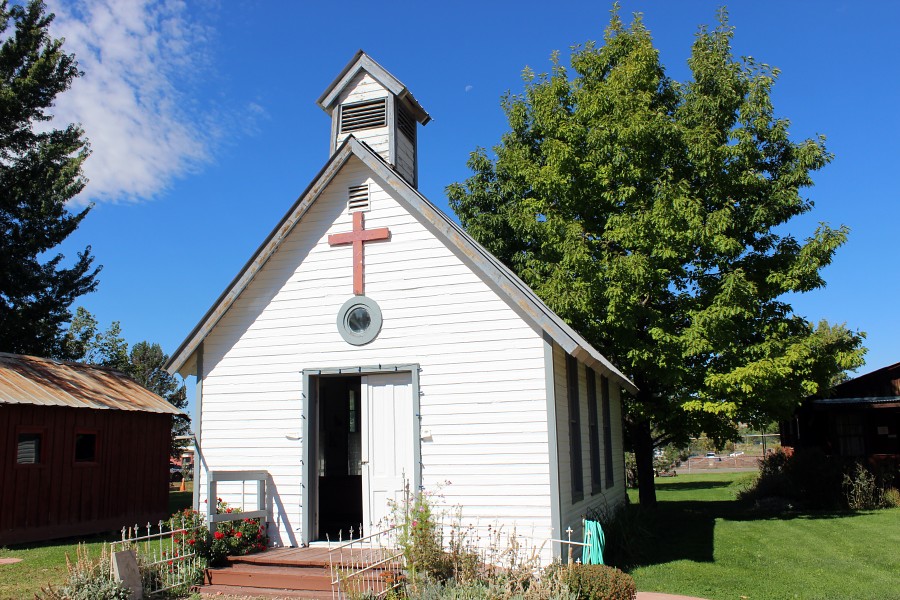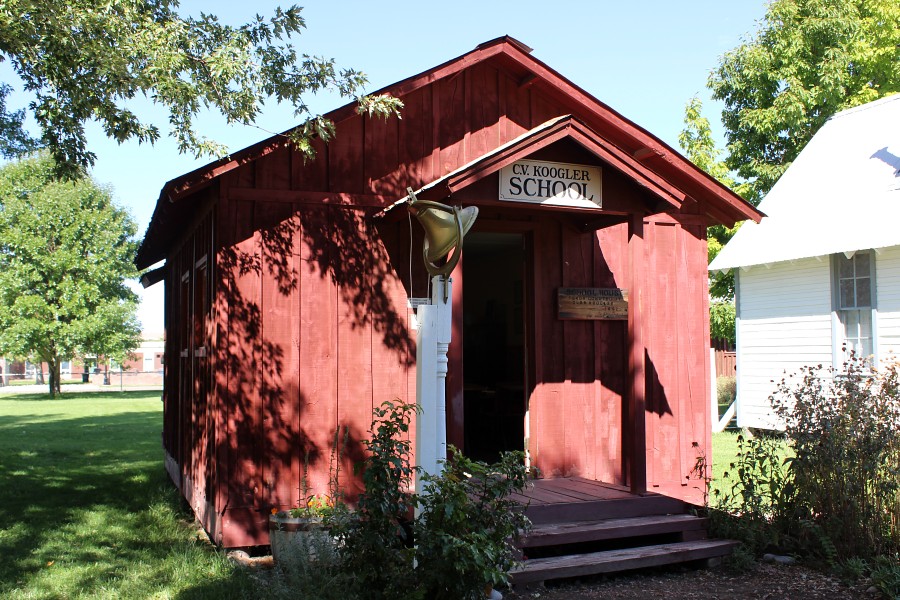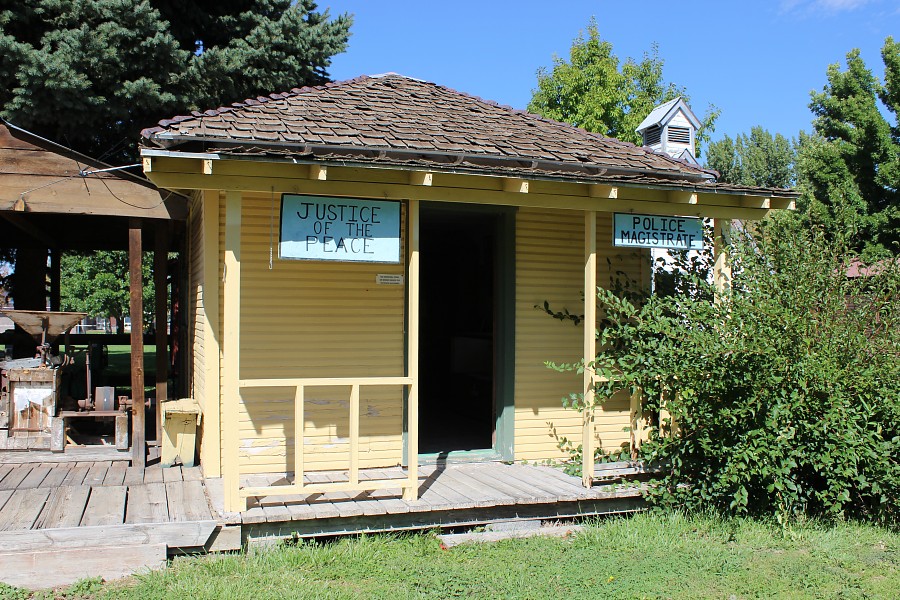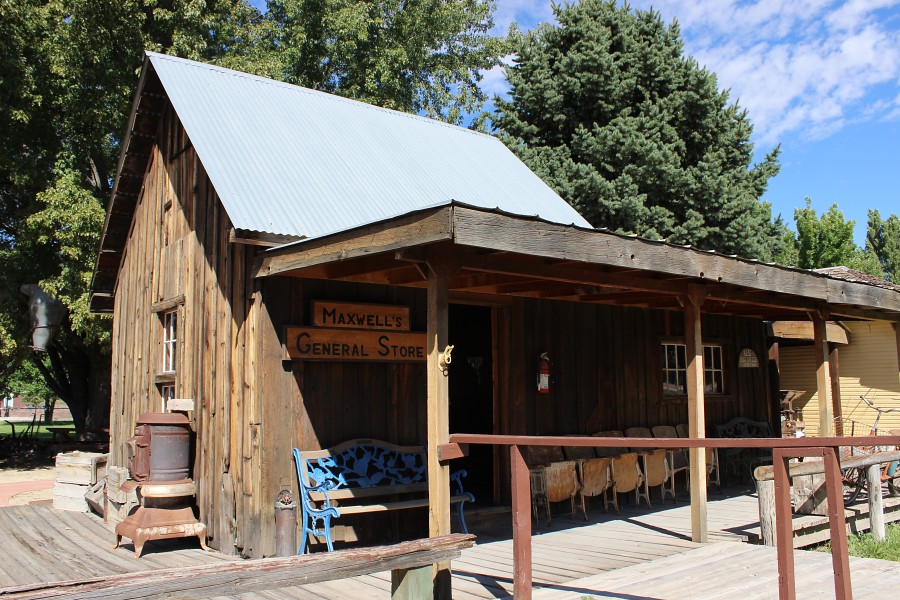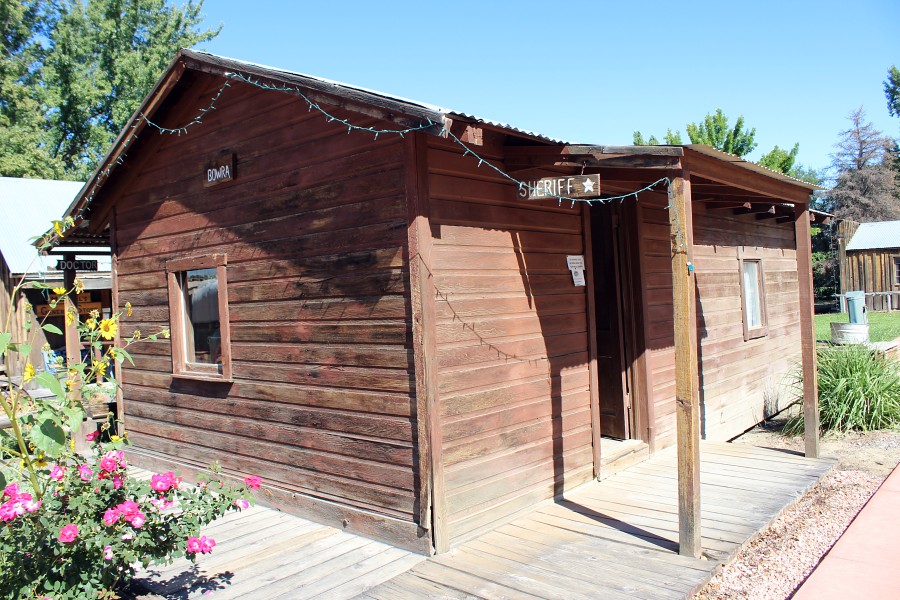PIONEER VILLAGE TOUR
Information about each structure is provided from the Aztec Museum's Self-Guided Tour handout.
➠ Back to Museum Page
Old Aztec Jail
Prior to 1887 there was no jail in Aztec. This jail was built in 1912. Notice the construction of rough cut 2x6 lumber that made it a very stout structure.
Tinsmith and Print Shop
At various times this building was a hardware/lumber and general store and a residence between Aztec and Farmington. The printing press prints one sheet of paper at a time and is used for printing demonstrations from time to time. On the right are tools for making implements from tin and copper. There are tools for both cutting and shaping metal.
Caboose
This is a replica of a Denver and Rio Grande caboose. Employees of the Cumbres and Toltec Railroad built it from an old D&RG boxcar. A caboose served as temporary living quarters and office space for the train crew. The D&RG served Aztec from 1905 until 1968.
Blacksmith and Carpentry Shop
The blacksmith was an all around handyman. He would make a fire in the forge and heat metal in the hot coals to make horseshoes, wagon wheel rims or repair a piece of equipment. He often would also shoe your horse. Grinding wheels were used to sharpen tools, plow blades and knives. A blacksmith still demonstrates his craft on special occasions. On the, right side is a carpentry shop with many tools that were used to build and repair homes, barns, other outbuildings, and even wagons and buggies.
Log Cabin
This is an original log cabin built between Bloomfield and Farmington in 1880 by F.W. Hamblet. With just one room and a dirt floor the conditions were rather primitive compared to what we are accustomed to today.
Citizens Bank
The Citizens Bank was established in Aztec in 1905. Although the building is new construction, the tellers' cages are from the 1910 bank building, which is still located on Main Avenue.
Farmhouse
This is a reproduction of an early upscale farmhouse. The furnishings date from the turn of the 20th century to approximately 1920s. Electricity was in use in Aztec by 1912 but it was not always reliable.
The Village Church
The Cedar Hill community built this church, 1906. Originally it was a bit larger than it is now. It was dismantled and reconstructed at a slightly reduced, scale to correspond with the rest of the village. The pews, pulpit, piano, and hymnals are all original. The church can be rented for weddings and other special occasions.
Schoolhouse
This is a replica of a one-room schoolhouse. One teacher would have taught grades one through eight in this one room. By the late 1890s most small communities still did not have a high school.
Magistrate's Office
Magistrate/Judge Fred Lawson used this building for 18 years to hear misdemeanor cases and issue dog and marriage licenses. The desk belonged to Judge Bruington.
Post Office and General Store
The service window in the post office came from the old Flora Vista Post Office. Take note of the postal scales behind the counter and cards and other items displayed on the walls. The general store resembles any number of small stores that could be found in America near the turn of the 20th century.
Doctor's Office
One of the first doctors to settle in this area was Dr. John W. Brown in 1878. He is remembered for his work with the Navajo people and for his leadership in settling disputes between the settlers and the Navajos. Dr. Kenneth Roberts, who practiced in this area for many years, donated most of the medical instruments for this display.
